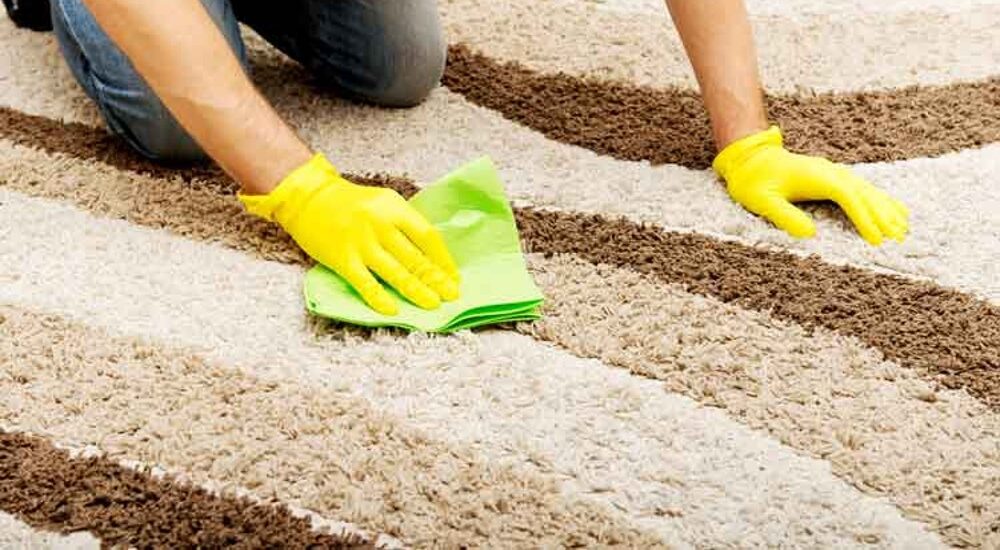Carpets play a significant role in enhancing the comfort and aesthetics of our homes. However, maintaining them in pristine condition requires a fine balance between regular cleaning and avoiding overcleaning. In this guide, we will delve into the various factors that influence carpet maintenance and provide insights into how to achieve carpet cleanliness without risking damage.
Factors Influencing Carpet Maintenance
a. Traffic and Usage Patterns:
The amount of foot traffic and usage your carpets endure impacts their cleanliness. High footfall areas like entryways, hallways, and living rooms are more prone to accumulating dirt and debris quickly. To manage this effectively, consider placing rugs or mats in these areas to reduce wear and tear on the carpet fibres.
b. Type of Carpet Material:
Different carpet materials require different maintenance approaches. For instance, wool carpets are more delicate and may require gentler cleaning methods than synthetic carpets. You must understand the specific care instructions for your carpet material to avoid damaging it during cleaning.
c. Environmental Factors:
Environmental conditions such as climate and location can also influence carpet cleanliness. In humid climates, carpets may be more prone to mould and mildew growth, necessitating more frequent cleaning. Similarly, homes located near busy streets or construction sites may accumulate more dirt and dust, requiring increased cleaning frequency.
d. Cleaning Methods and Equipment:
The choice of cleaning methods and equipment significantly impacts the effectiveness of carpet maintenance. Steam cleaning, dry cleaning, and shampooing are popular methods, each with pros and cons. Additionally, investing in quality cleaning equipment can make a difference in the results achieved. However, it’s essential to avoid overusing harsh chemicals or abrasive cleaning techniques that can damage carpet fibres.
Signs of Overcleaning Carpets
Clean carpets contribute to a welcoming environment, but excessive cleaning can actually harm them. Signs of overcleaning carpets include:
- Excessive Wear and Tear: Overcleaning can lead to accelerated wear and tear on carpet fibres, causing them to become thin, frayed, or worn down.
- Faded Colors: Harsh cleaning chemicals or abrasive cleaning methods can cause colours to fade or become dull over time.
- Weakened Carpet Fibers: Constant exposure to cleaning solutions and aggressive scrubbing can weaken the carpet fibres, making them more susceptible to damage and deterioration.
- Increased Allergens: Overcleaning may strip away the natural oils and protective coatings in carpet fibres, making them more prone to attracting and retaining allergens such as dust, pollen, and pet dander.
- Lingering Odors: Excessive use of cleaning products or moisture during cleaning can lead to lingering odours in carpets, indicating that they may have been overcleaned.
- Rapid Resoiling: Over-cleaned carpets may resoil more quickly as their protective coatings are stripped away, leaving them vulnerable to attracting dirt and debris.
- Reduced Lifespan: Ultimately, overcleaning can shorten the lifespan of carpets, leading to the need for premature replacement.
By being mindful of these signs, you can avoid overcleaning your carpets and maintain them in optimal condition for longer.
Best Practices You Must Follow for Carpet Maintenance
a. Establishing a Cleaning Schedule:
Create a balanced cleaning schedule that includes both routine maintenance and deep cleaning tasks. Vacuuming at least once a week and scheduling professional cleanings every 12-18 months can help maintain your carpets’ cleanliness while preventing overcleaning.
b. Using Professional Services Wisely:
While professional carpet services like Wizard Cleaning can provide excellent results, using them wisely is essential. Avoid frequent professional cleanings unless necessary, as excessive cleaning can lead to wear and tear. Additionally, research and choose reputable service providers who use safe and effective cleaning methods. Also, instead of deciding whether or not to clean your carpet yourself, ask a professional whether your carpet needs cleaning.
c. Implementing Preventive Measures:
Implementation of preventive measures can reduce the need for frequent carpet cleaning. Encourage occupants to remove their shoes before entering carpeted areas to minimize dirt and debris. Placing entry mats or rugs at doorways helps trap dirt and prevent it from spreading onto carpets.
Best DIY Carpet Cleaning Tips
- Vacuum Regularly: Start by vacuuming your carpets at least once weekly to remove surface dirt, dust, and debris. For the best results, use a vacuum cleaner with a high-efficiency particulate air (HEPA) filter.
- Address Spills Promptly: Wipe out spills and stains promptly to prevent them from setting permanently into the carpet fibres. Blot the spill with a clean, dry cloth or paper towel to absorb the liquid.
- Blot, Don’t Rub: Avoid rubbing or scrubbing the carpet when cleaning stains, as this can spread the stain and damage the fibres.
- Use Baking Soda for Odor Removal: Spread baking soda over the carpet and let it sit for several hours or overnight to absorb odours and then vacuum the baking soda thoroughly to remove it and the trapped odours.
- Consider Professional Cleaning: Hire a professional carpet cleaning in Melbourne for stubborn stains or heavily soiled carpets. Professional cleaners have the expertise and equipment to effectively and efficiently clean carpets.
Maintaining clean carpets is essential for a healthy and comfortable indoor environment. By understanding the factors influencing carpet maintenance and adopting best practices, you can achieve optimal cleanliness without risking damage from overcleaning. Strike a balance between regular maintenance and preventive measures to keep your carpets looking and feeling their best for years to come.

